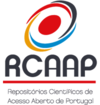Writing in Autism as a Possibility of Enunciation
DOI:
https://doi.org/10.5281/zenodo.11359031Palavras-chave:
Autism; Enunciation; Teaching; Language; Subjectivity.Resumo
No ambiente educacional, estudantes com autismo costumam apresentar dificuldades em participar de atividades em grupo, isolamento, linguagem imatura e fixação em temas específicos. É importante ressaltar que o estudante com autismo tem dificuldades, ou não compreende, metáforas e outras formas de linguagem não literal. O nosso objetivo é analisar os movimentos enunciativos presentes em narrativa escrita por um estudante autista, confirmando o deslize do sujeito na linguagem. Para refletir sobre a relação do sujeito com a linguagem escrita, utilizamos como referencial teórico os conceitos da linguística enunciativa do pesquisador Émile Benveniste (1902-1976), o qual define enunciação como o ato individual de colocar a língua em funcionamento e configuram marcas específicas do sujeito na linguagem. Participou deste estudo um aluno diagnosticado com autismo, 14 anos de idade, sem comorbidade, matriculado no oitavo ano do Ensino Fundamental II de uma escola privada, o qual é acompanhado na sala de Atendimento Educacional Especializado, na cidade de Cabo de Santo Agostinho, Pernambuco. A análise da narrativa escrita apontou que o estudante apresenta movimentos enunciativos indicativos do manuseio singular da linguagem escrita, marcando a sua subjetividade na linguagem.
Downloads
Referências
AMERICAN PSYCHIATRIC ASSOCIATION - APA. Diagnostic and statistical manual of mental disorders: DSM-5. Porto Alegre: Artmed, 2014.
ASSUMPÇÃO JR., Francisco Baptista. (Org.). Invasive Disorders of Child Development. São Paulo: Lemos Editorial, 1997.
BENVENISTE, É. Problems of general linguistics I. 5th ed. Maria da Glória Novak and Maria Luisa Neri. Campinas, SP: Pontes, 2005.
BENVENISTE, É. Problems of general linguistics II. 2nd ed. Eduardo Guimarães et al. Campinas, SP: Pontes, 2006.
BERNARDINO, Leda Mariza Fischer. The importance of writing in the autism clinic. Review USP. 2015.
BIALER. M. The voice in autism: an analysis based on autobiographies. Estilos clin., São Paulo, v. 22, n. 2, May/Aug. 2015.
BERNARDINO, L. M. F. What psychoanalysis can teach about the child, subject in constitution. São Paulo: Escuta, 20CAVALCANTI, Ana Elizabeth; ROCHA, Paulina Schmidtbauer. Autism: construction and deconstructions, São Paulo: Psychologist's house,, 2001
BASTOS, M. B. Incidences of educating on treating: challenges for the psychoanalytic clinic of infantile psychosis and autism. 2012. Thesis - University of São Paulo, São Paulo, 2012.
ENDRUWEIT, Magali Lopes. Analysis of Written Enunciation. Proceedings of the International Seminar on Text, Enunciation and Discourse (SITED). Porto Alegre, 2004.
FERRARI, Pierre. Autism in children: what it is and how to treat it. Trad. Marcelo Dias Almada. São Paulo: Paulinas, 2007.
FERNANDES, Fernanda Dreux Miranda; PASTORELLO, Lucila Maria; SCHEUER, Claudia Inês. Speech therapy in childhood psychiatric disorders. São Paulo: Lovise, 1995.
FERNANDES, Fernanda Dreux Miranda. Childhood autism: rethinking the speech therapy approach - functional aspects of communication. São Paulo: Lovise, 1996.
JERUSALINSKY, A. N. A psicanálise do Autismo 2 ed.- São Paulo: Instituto Langage, 2012.
KNACK, Carolina. Text and enunciation: written modalities as instances of investigation. 2012. 189f. Dissertation (Master's in Language Studies). Federal University of Rio Grande do Sul, Porto Alegre, 2012.
KANNER, Leo. Child psychiatry. Buenos Aires: Paidos e Psique, 1966
MALEVAL, J.C. The autistic and their voice. São Paulo: Blucher, 2017.
MINAYO, M. C. S. Science, Technique and Art: The Challenge of Social Research. In: DESLANDES, S.F. Social Research: theory, method and creativity. 21. Ed Petrópolis, RJ: Vozes, 2001.
MILMANN, E. The fundamental role of writing in inclusive education. IN: KUPFER, M. C. M; PATTO, M. H. S; VOLTOLINI, R. (Org.) Práticas Inclusivas em escolas transformadoras: acolhendo o aluno sujeito. São Paulo: Escuta: FAPESP, 2017, P. 91-108.
MATOS, CM. Non-literal language comprehension in children with Autism Spectrum Disorders. Supervisor: Professor Maria Armanda Costa. 2012. 156 f. Master's dissertation (Master in Cognitive Science) - University of Lisbon, Lisbon, 2012.
NEY, T.; HUBNER, L. C. Oral and written language in autism - ASD: theoretical and pedagogical perspectives. The Specialist 2022.
RODRIGUES, E. A., AGUSTINI, C., & ARAÚJO, Érica D. de. (2022). Émile Benveniste's theorization on writing: (from) the point of view of social life. Fragmentum, 2020
SILVA, Carmem Luci da Costa. The child in language: enunciation and acquisition. Campinas, SP: Pontes Editores, 2009.
SILVA, Ana Beatriz B, (et al). Singular World: Understanding Autism. Rio de Janeiro: Objetiva, 2012.
TOLDO, C. The text: unit of meaning in language work at school. Cadernos de Linguística,2021
WALENSKI, M.; TAGER-FLUSBERG, H.; ULLMAN, M. T. Language in autism. In MOLDIN, S. O.; RUBENSTEIN, J. L. R. (eds.). Understanding autism: from basic neuroscience to treatment, p. 175-203. London: Taylor & Francis Books, 2006.
Downloads
Publicado
Como Citar
Edição
Seção
Licença
Copyright (c) 2024 Revista Letras Raras

Este trabalho está licenciado sob uma licença Creative Commons Attribution-NonCommercial 4.0 International License.







